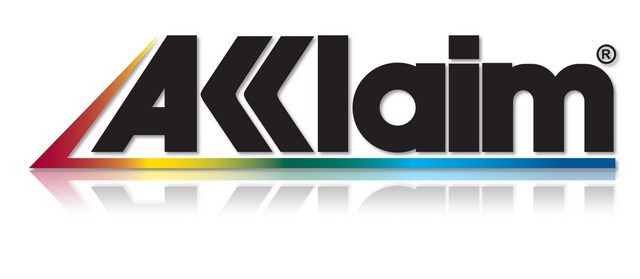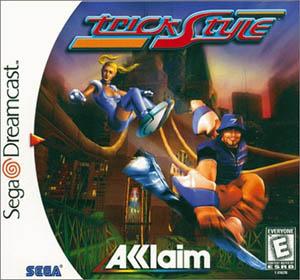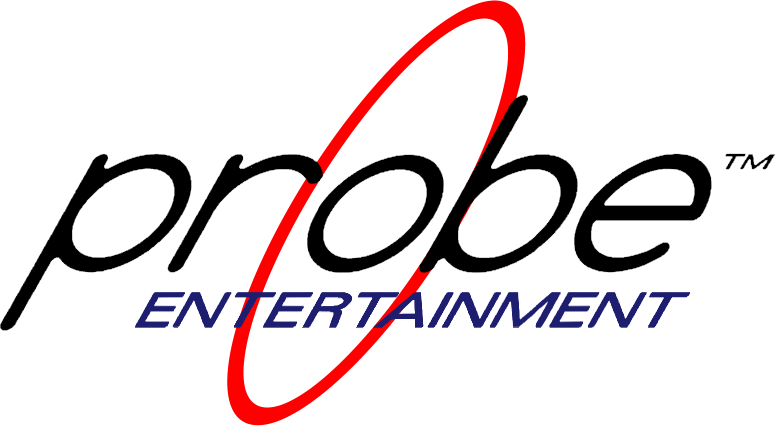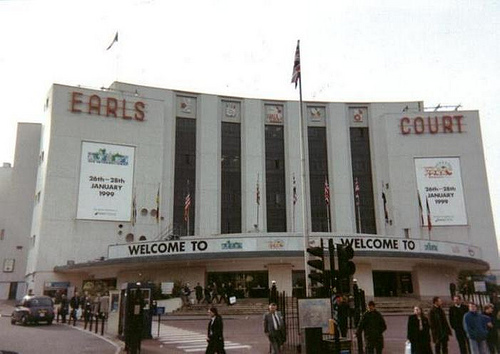We thought it would be fun to share the true history of Burnout with you. Written by us and telling the story from our point of view.
It is ten years ago today that we published our last Burnout game, “Burnout Paradise” at Criterion Games, back when we still worked for Electronic Arts. Why are we doing this now?
Firstly, we thought that this was an appropriate a time as any to share more widely a story we have been sharing with subscribers to our mailing list here at Three Fields Entertainment. This is a story about how an arcade racing game with a shiny red car in it came to life. Secondly, we make a lot of games back to back over a ten year period. In conclusion, well, we really did put the pedal to the metal in terms of game development during the PlayStation 2 to PlayStation 3 era!
These are just extracts …. for the full story sign up HERE:
Fiona on joining Criterion Software:
 “In early 1997 I joined Criterion Software as a Producer in Guildford, Surrey. A subsidiary of Canon, Inc, it was predominantly a technology company. It had a strong interest in the development and application of 3D imaging. Back then, it was beginning to utilise their expertise in 3D graphics by making a few titles for accelerated PC’s. It was something of a sideways step for me coming from the world of book and multimedia publishing.”
“In early 1997 I joined Criterion Software as a Producer in Guildford, Surrey. A subsidiary of Canon, Inc, it was predominantly a technology company. It had a strong interest in the development and application of 3D imaging. Back then, it was beginning to utilise their expertise in 3D graphics by making a few titles for accelerated PC’s. It was something of a sideways step for me coming from the world of book and multimedia publishing.”
“On the development side there were no women, just a couple in admin and marketing. To be honest, I wasn’t sure I would be staying there too long. However I remember that a few people got fired in my first week after failing their probation period. That was interesting to me. At my previous company no-one ever got fired. This company clearly had high standards and that was something that definitely appealed to me.”
Alex on his job as A&R at Acclaim:
 “At this time my job involved visiting almost every European development studio and looking for titles that we could publish. Acclaim had several studios and the idea was that if I could find one or two hits from outside the company, then this could potentially allow more development time to be spent making an internal title better.”
“At this time my job involved visiting almost every European development studio and looking for titles that we could publish. Acclaim had several studios and the idea was that if I could find one or two hits from outside the company, then this could potentially allow more development time to be spent making an internal title better.”
Fiona on how she met Alex for the first time:
“As Criterion was a Japanese-owned company our CEO David Lau Kee had extensive contacts in Japan. It was David who built a relationship with SEGA in Japan (and subsequently and very significantly with Sony) and thus my team were granted early access to development kits the as yet unreleased Sega Dreamcast. By the time of the next E3 in 1998 we had a slick playable PC demo of the game and were ready to seek a publisher. The game was known as ‘Velocity’ (would later be published as Dreamcast launch title TrickStyle).”
“Before joining Criterion, I had worked in book and multimedia publishing at the UK division of the McGraw-Hill Book Company. The Managing Director at the time was a gentleman called Fred Perkins and Fred’s son in law just happened to be Rod Cousens, veteran UK game publisher and President of Acclaim Entertainment in Europe. I’d met Rod at Acclaim demonstrating a CD-ROM title two years before and so I contacted him again to say I was now at Criterion and had a game I’d like to discuss. He said he’d set me up an appointment with the guy who ran their A&R, Alex Ward.”
“The meeting at E3 in Atlanta with Alex almost never happened as Alex had twice tried to cancel leaving us with the distinct impression he wasn’t interested I think he believed we weren’t making very good games. This meeting turned out to be a key part in the history of what became Burnout.”
Alex on signing a publishing deal for TrickStyle:
 “The game looked impressive with a great futuristic style. The game was running on PC and Set One Dreamcast development hardware. It also featured some very arcade inspired characters – and that was something that I had seen a lot of European developers struggle to get right. We’d also heard through the grapevine that Criterion was one of the very first groups in the world to be secretly working on what was then referred to as “NGP” – or “Next Generation PlayStation.” We were always looking for development studios we could form a long term relationship with, so it seemed like a smart move to make a deal with Criterion that year.”
“The game looked impressive with a great futuristic style. The game was running on PC and Set One Dreamcast development hardware. It also featured some very arcade inspired characters – and that was something that I had seen a lot of European developers struggle to get right. We’d also heard through the grapevine that Criterion was one of the very first groups in the world to be secretly working on what was then referred to as “NGP” – or “Next Generation PlayStation.” We were always looking for development studios we could form a long term relationship with, so it seemed like a smart move to make a deal with Criterion that year.”
Fiona on taking over running Criterion Studios:
“After the launch of “Trickstyle” in September 1999 I was asked if I would consider taking over the games side of Criterion. At the time Criterion had two and a half teams under the name of ‘Criterion Studios’, none of whom had yet seen any real success. There were not many design leaders and it wasn’t really clear to anyone what games we would make next.
There was the “TrickStyle” team, with people like Ed, Craig, Omar, Neil Manners and Steve Lucas, who I hoped would be supportive of my appointment and the remnants of the “Sub Culture” team – who I had no real relationship with – so that was daunting. Though Mike Williamson who would become a really close ally and friend for the next few years was from that team.
There were also a small team that had worked on 3D graphics demos for Intel out of which emerged the motorbike games “Redline Racer” and its spin off “Suzuki Alstare Extreme Racing” (the latter of which was notably led by graphics programmer Alex Fry, another person who would be key to Criterion’s future.)”
“After a lot of thought, I accepted the job on the proviso that we find and hire a Creative Director. We needed someone who knew games inside and out and who could provide a clear direction of the types of games we could make that would also be commercially viable. In a meeting with Criterion Software boss Mike King I remember using the words ‘someone like Alex’. It was Mike who said ‘well why not Alex?’”
Alex on joining Criterion:
“I was first approached by Mike King in a pub car park in Guildford on a Friday. He asked me if I was thinking about making a move from game publishing over to game development. He said the game studio needed to move in a new direction. At the time I wasn’t really thinking about a new job, but I was growing pretty bored with the constant air travel I was doing.
I took close to 200 flights in 1997-1998. I had a PlayStation branded bag. Thus, I was on first name terms with a lot of the X-Ray machine security checkpoint staff at Heathrow. They were always asking me what games were coming out next.
“I was privy to a lot of exciting stuff at Acclaim. Each and every day there was something interesting behind-the-scenes. It was certainly never a dull job. But there was also a lot of stuff going on in the wider company that I wasn’t happy with. And also I lot of people overseas I disliked. So when Mike King came back to me and offered me the job, I accepted.
The timing wasn’t perfect though – we’d just done deals with Bizarre Creations for Sega Dreamcast action shooter “Furballs” and also also some ex-Psygnosis coders Brain In A Jar who had a pretty cool Ferrari demo. I was a bit torn as I was working closely with the leaders running both of those projects.
The beginning of Burnout:
Fiona: When Alex joined the new studio in January 2000 we had two and half development teams on the go. The “TrickStyle” team were in the early stages of making a sequel using the newly arrived development kits for PlayStation2. These kits were big, heavy, and for security reasons were locked into place in metal cages that were physically bolted into the concrete under the office floor.
The “Sub Culture” team were finishing up a sequel for Ubisoft on the Dreamcast (which would be published under the name “Deep Fighter“). We also had a third group trying to come up with a new game idea. We thought it should be a mission based driving game and had put together a brief written pitch. The Renderware group had just signed a big deal with Midway in Chicago for them to use the Criterion middleware across all of their titles. They suggested if we had anything internally, we should meet first with their San Diego office.
Fightertown USA
In February 2000, Designer Chris Roberts and Art Director Mike Williamson joined Alex and I on the trip. The night before the meeting Chris talked Alex through the game design ideas we had – which was a mission based driving game. The only thing I can remember about it now nearly 18 years later is that you delivered donuts to the cops. It was clearly a killer concept! Silence fell as Chris finished talking and Alex eventually said ‘so what do you think of it?’. Chris smiled and said ‘it’s rubbish…. I’ll work on it but I wouldn’t buy it!’ So there we were in the hotel bar and nothing concrete to pitch the next day. My strategy switched to become “survive this meeting and then come up with a new game – FAST. “
The time came for the meeting and luckily surviving it was pretty easy as a) the guy we were met was more interested in talking about board games than arcade games and b) anyone who went to Midway’s offices back then will know that it was situated under the flight path of the US Navy’s Miramar Air Force Base meaning that you’re regularly treated to the deafening sound of fighter jets passing overhead. Not that conducive to a productive meeting really – but in this case we were desperate to get out and continue talking about what we were going to do next.
Bored game
Alex: “I was excited to visit Midway. I’d been a big fan of most of their coin-op titles for years. Their office was small but at least the reception area had a few of their latest cabinets switched on in free play mode. The meeting quickly turned out to be a bust. It was interesting for me, because I was now on the other side of the table. I could understand why most developers thought publishers didn’t have much of a clue. Here we were, I thought, in arcade territory, surely we’d be meeting like minded people? People massively into great arcade style game play? I was mistaken. I needed to find out quickly if these people were worth talking to. The Producer we met was very junior and came across a bit clueless. At one point he actually said, “if I had to choose between playing a video game or a board game – I’d choose a board game every time.” I’d heard enough when he said that.”
“The pitch we had was a bit of non-starter anyway. It was hastily put together as a game in the style of the “panic” series of arcade games Sega were putting out in Japan – which were “Crazy Taxi” “Emergency Call Ambulance” and “Jambo Safari!””
Fiona: Game makers rarely if ever just pull a random idea out of the air, they’re inspired by what else they have seen, what they have played and what they have experienced. We were no different. Alex as Creative Director became the driving force at the Studio and that remained true for every game we made. The implementation, done brilliantly so many times over, was handled by the amazing teams who worked with us. But the core ideas – and the key way that each game would be different to the last- that was largely down to Alex and the small team that worked with him.
Alex has just always had this really strong grip on what each game was going to be and why. To a Producer like me, he is exactly the kind of Director you want to work with and why we have worked together for so long. It allows me to do my job because he is doing his.
Under Pressure
Alex: “I was always very into arcade games, from quite an early age. If you wanted to see the latest and greatest hardware and also be inspired by what was to come – then you had to be studying arcade games in the 1980’s and 1990’s. Since I first met the Criterion guys I knew that the pressure would be on to get a project up and running as quickly as possible.
I had a spreadsheet on my computer which listed pretty much every single developer in Europe, and what titles they currently had in development. Not only did I know what most of the releases that year were going to be. I also knew most of what was coming the following year and the year after that.
Eight Bit Heroes
I’d learned the mantra “know your product, know your market and know your competition’ from Joe Bonar and Tony Beckwith from Probe Entertainment in Croydon. They were very smart people and were UK development veterans. To have a chance of breaking through with a new team, with a new game, on hardware that wasn’t yet out I knew we’d have to try and stack the deck in our favour as much as possible.
My plan was to make a true arcade-style racing game for the PlayStation2. I saw the Criterion guys as massively ambitious, and incredibly technically competent. They just needed a hit game to really make their name. A lot of the games I’d been shown during my time as an A&R were often too ambitious and quite weak technically – often taking ideas from PC titles and then struggling to make those ideas work on consoles like the PlayStation.
My favourite genre in gaming has always been racing, especially the coin-op titles. “OutRun” had really had a massive influence on me and I closely followed the arcade scene. I’d worked with Leon Deith in Acclaim’s short-lived coin-op division for a time and got to attend all of the London amusement trade shows – the ATEI in Earl’s Court and the smaller AL Preview show which was held in a hotel in Hammersmith. A room full of brand new arcade games? All on free play? For someone like me, there was nothing better in the world!
As much as I loved the early simulation attempts in the driving genre, I knew we’d have no chance starting off and trying to beat Polyphony Digital and “Gran Turismo” with our first game. Likewise, there were a lot of teams trying to make mission based driving titles in the vein of “Driver” by Reflections. But the thought of some sub-par storytelling and wonky polygonal characters shaking around in cutscenes easily put me off that idea.
So, I was a big fan of Namco’s Ridge Racer, OutRun by Sega’s AM2 division, and the very first version of Need for Speed by Electronic Arts on the Panasonic 3DO console. I remember the excitement and amazement in the room when my friends first saw the car crashes in the game. Like Sega’s OutRun, the first NFS had that rare mix of high speed driving , traffic, and crashes.
Nobody else was making a game that had cool crashes for due to licensing restrictions. I figured if we did that and made it fast then we’d be onto something.
Fiona: It was clear from the start that Alex had a really clear idea of what he wanted us to do – Make a game that was really fast, really fun, that anyone could play and which had the best car crashes seen in a game. So that became our mantra.
But before we could do that we had to put a car on screen and make a car drive. That led us to our first prototype on the PlayStation2 development kit. This prototype became known as “SRC” which stood for Shiny Red Car. Another milestone in the history of Burnout.
You can read part two of the History of Burnout here:
__________________________________________________________________________________
For more please sign up HERE:
Three Fields Entertainment is a registered trademark of Three Fields Entertainment Limited. All other trademarks are owned by their respective owners.

